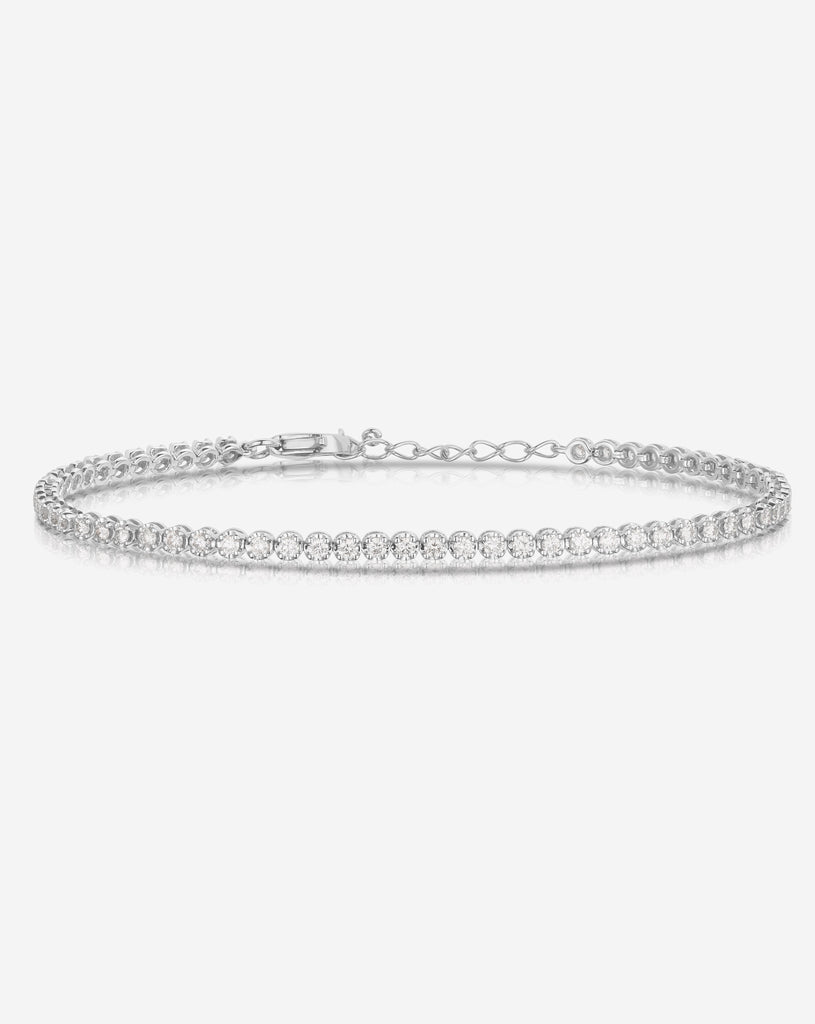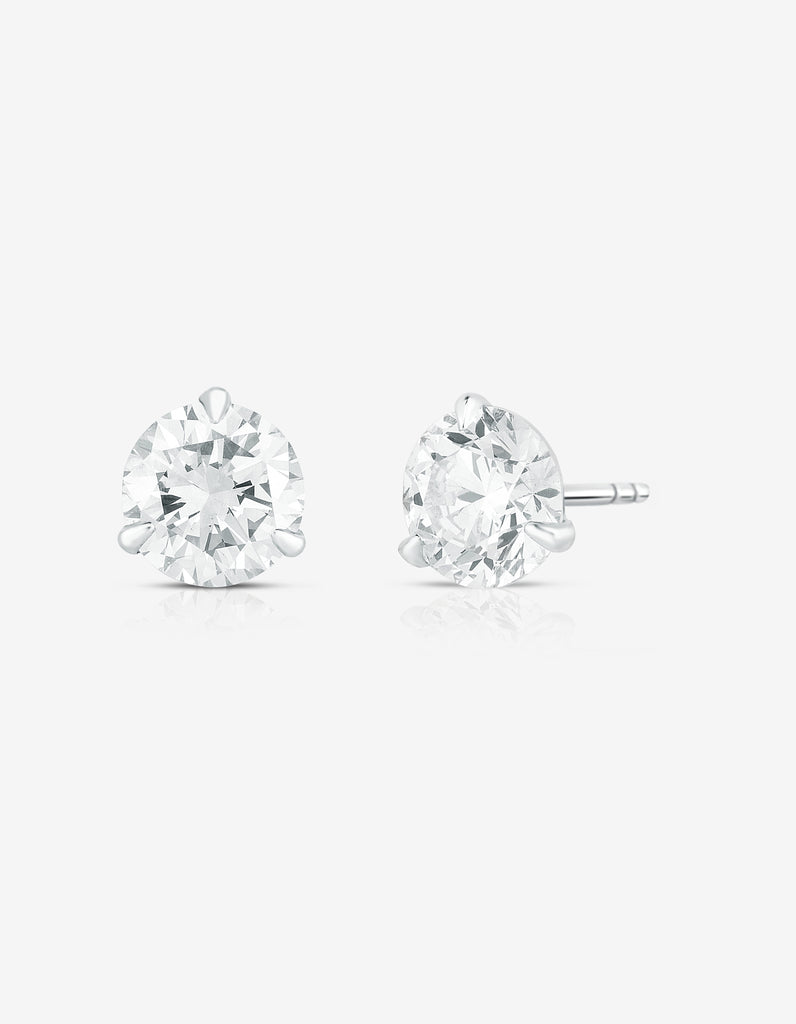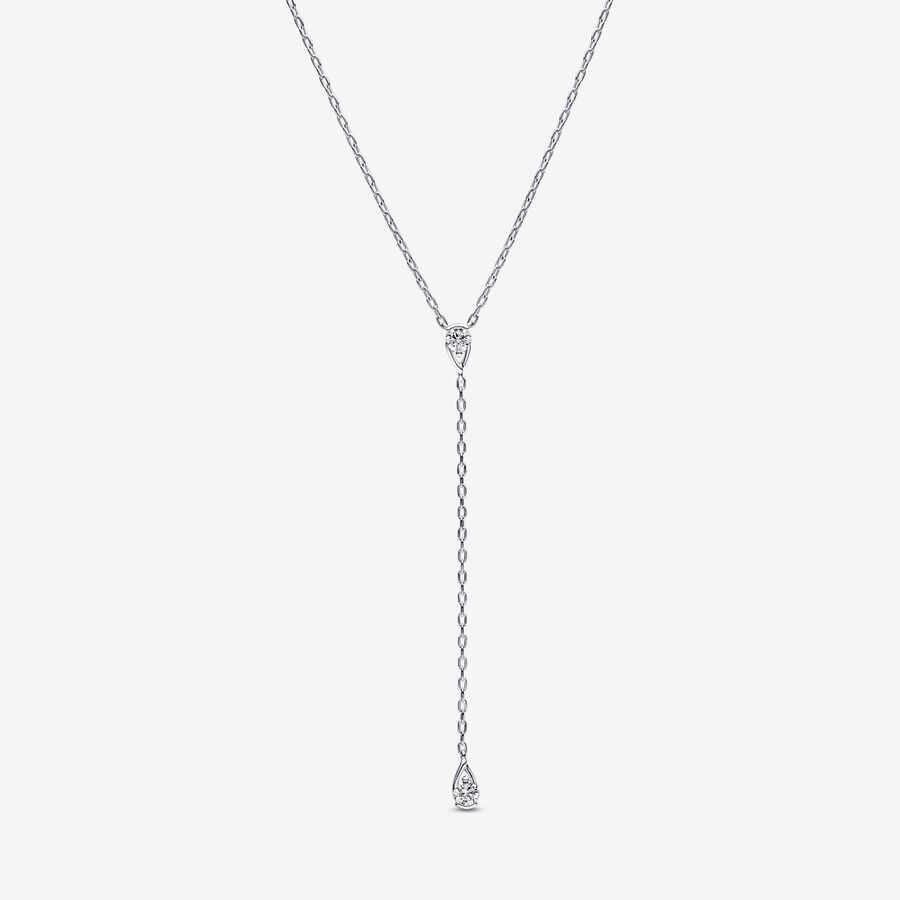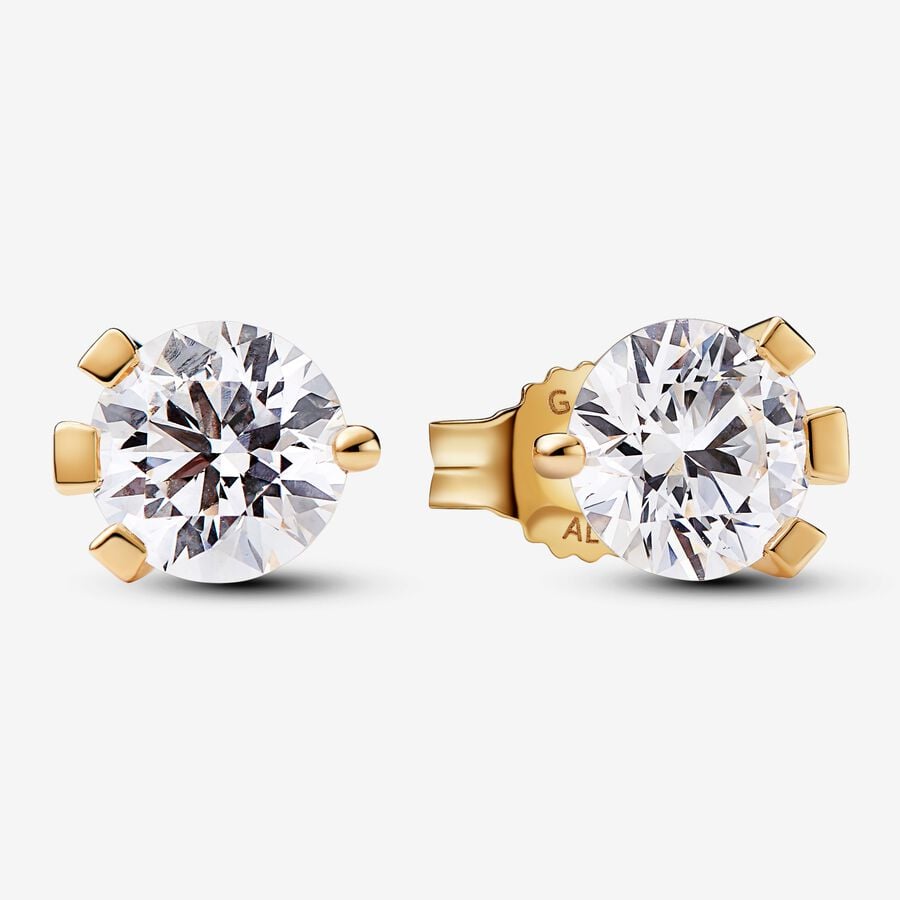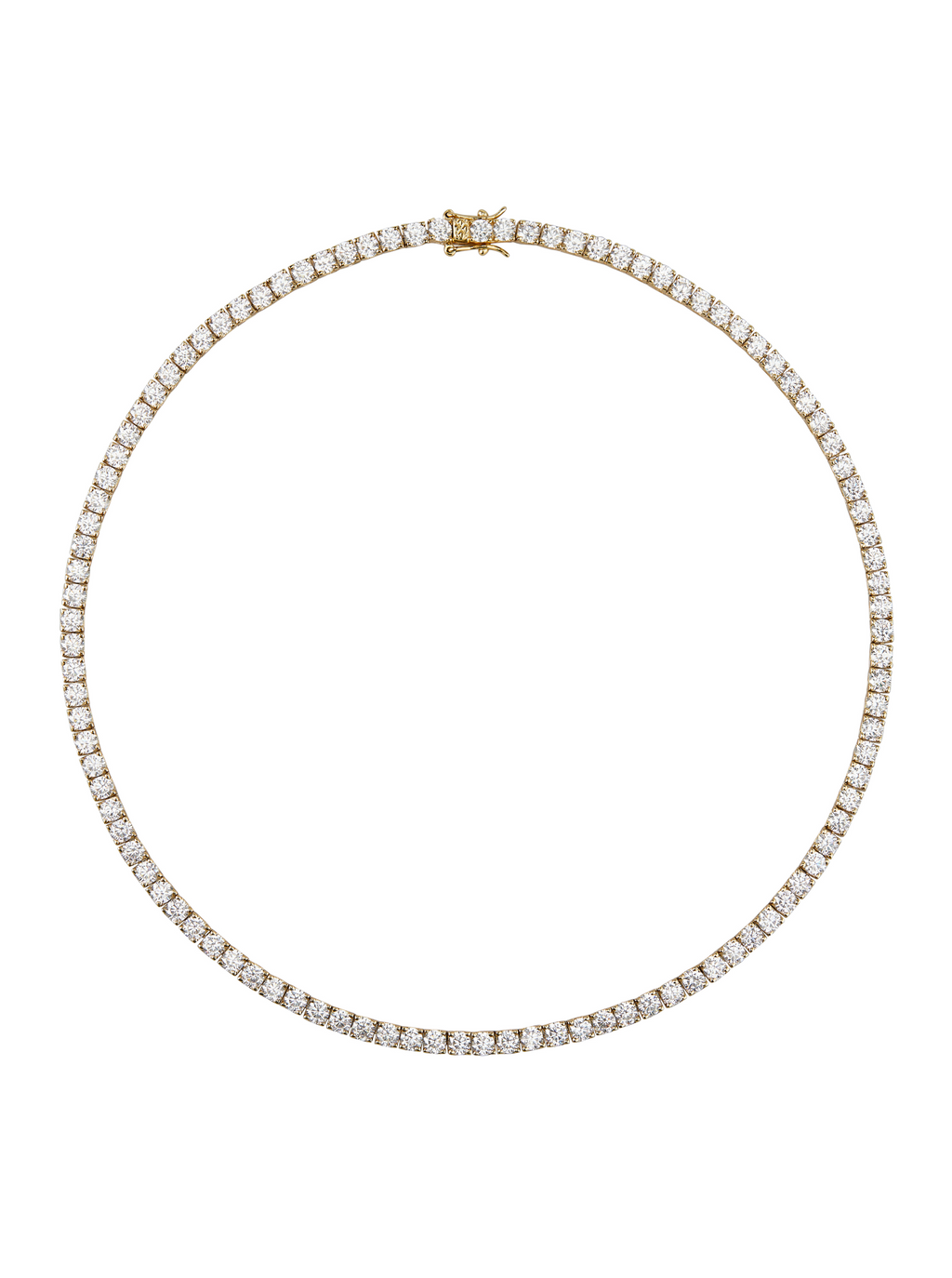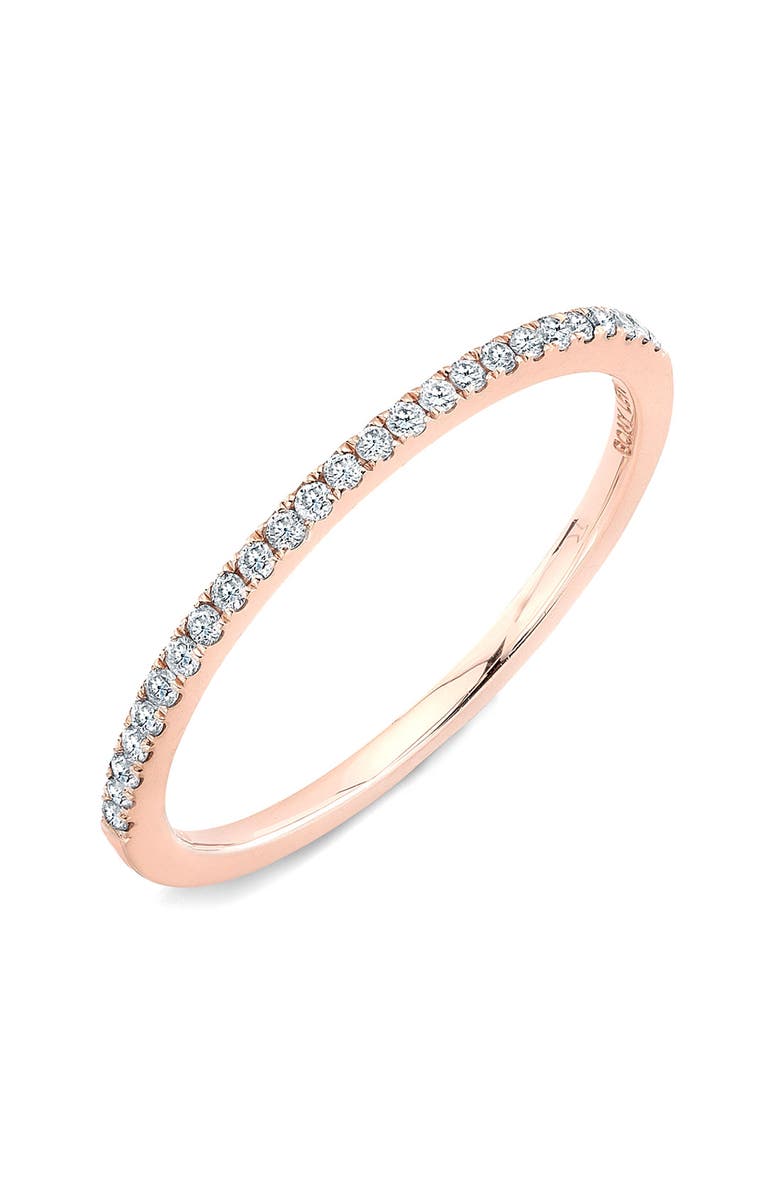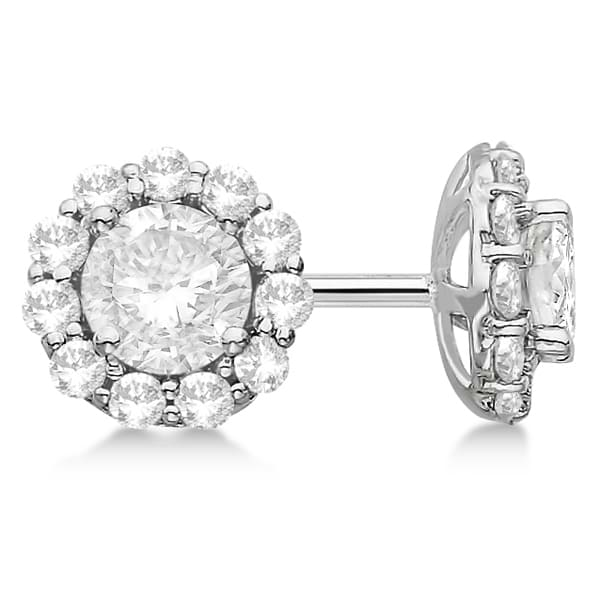Lab Diamonds! Moissanite! Mined Stones! What's Worth It (and Not) in 2024


I've ended up on the engagement side of TikTok despite being nowhere near ready to say "I do." Perhaps it's the algorithm feeding into my desires of bright, shiny, expensive things or my newfound appreciation for Netflix's Love Is Blind, but more and more, I've come face-to-screen with six-carat stones and intricate, pavé diamond bands.
While reality show–level rings aren't the highest priority on my buy list, TikTok is feeding me a combination of stealth wealth aesthetics and mob wife visuals, which has convinced me that, in fact, Birkins and fur coats aren't the true sign of opulent, well-mannered investment buys. Instead, diamonds are.
Tennis bracelets, illusion studs, and dainty diamond necklaces have all been transformed from high-end items into something that feels more attainable. While 2023 felt like the year of the girl, complete with bows, dresses, and superfluous frills, 2024 is the year of the woman. And, frankly, what's more of an "adult" thing to do than to buy yourself diamonds?
Whether you're searching for naturally mined stones, lab-grown pieces, or consciously crafted alternatives, there's a wealth of knowledge online about diamonds and their affordable counterparts, largely thanks in part to female-owned direct-to-consumer luxury brands and well-trusted jewelry behemoths that have just recently stepped into the diamond business.

Lab-grown diamonds have existed for decades, well before the engagement-and-fine-jewelry business got its hands on them. Previously used in machinery or in tools for drilling and polishing, lab-grown diamonds weren't really seen as desirable by the Gemological Institute of America, or the GIA. Prior to the mid-2010s, the group (which is responsible for grading and vetting a vast majority of diamonds in the United States) referred to lab-grown diamonds as synthetics—a far cry from the opulence, wealth, and desirability that the stone often represents. After the GIA began grading lab-grown diamonds on the same scale as naturally mined diamonds in 2019, and the taboo slowly faded about whether or not lab-grown stones were "real" diamonds, their demand skyrocketed.
To the untrained eye, lab-grown diamonds and naturally mined diamonds look nearly identical. Besides a minuscule engraving that can be found on the side of the stone under a microscope, most people wouldn't know the difference. The only way you'd really be able to tell is in the case of engagement rings, Ring Concierge founder Nicole Wegman explained to Who What Wear.
While there are hundreds of female-founded fine-jewelry businesses on the marketplace, Wegman's brainchild is the maverick. Ring Concierge, founded as the antithesis of the traditional, stuffy, man-run diamond industry, focused on meeting the needs of women rather than men buying for women. Founded in 2013, the brand aims to demystify the diamond industry and buying process. While Ring Concierge's primary model relies on engagement jewelry, the brand's step into non-wedding jewelry in 2017 now makes up a significant portion of its revenue.
Even when you put two stones together, you really can't tell the difference between the stones' superficial features, such as the color or how internally flawless they are. The Ring Concierge engagement rings I'm wearing below are the perfect example. They're roughly the same size and have similar specs, but the lab-grown diamond is nearly $20,000 less than the naturally mined stone. Can you tell which is which?
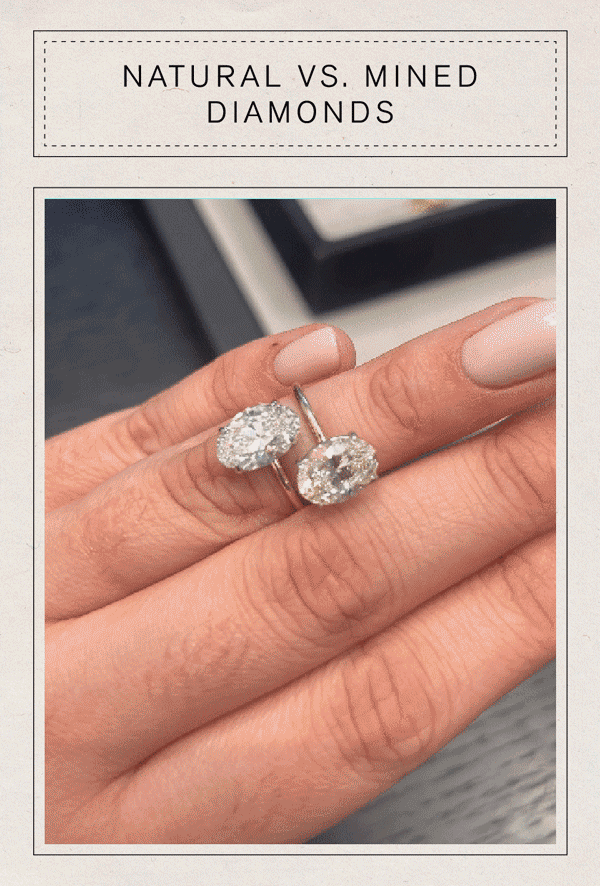
Although lab-grown diamonds might be a more ethical and economic option, their value is decreasing year over year—a point Wegman makes time and again when it comes to investing in jewelry. Although you'd never think about selling your engagement ring 20 years down the line, it's a real possibility. As more diamond laboratories open up and the marketplace becomes saturated with the stones, the lab-grown diamond you may have paid $20,000 for 10 years ago might be worth a measly $5000 in the next five years.
"There's just more competition as to who's selling lab-grown diamonds. It used to be only a few people that did it. None of the luxury houses touched it. A lot of local jewelers didn't touch it. Now, everybody's selling lab-grown stones," Wegman says. "You just have more competition, and retail prices are going to come down. Where they bottom out is the huge question mark."
Although Ring Concierge offers lab-grown diamonds when it comes to engagement rings, its fine-jewelry business nearly always relies on creating pieces with naturally mined stones—a choice, Wegman says, that is all about transparency.
"When it comes to fine-jewelry pieces, the smaller [fine] pieces, the labor and the cost of gold are a very big component in the total price. The savings you would get by moving to lab-grown become pretty nominal," she explains. "[With fine jewelry], we need to create a product that we feel really good about, what it looks like, how it wears, but also the price point and the long-term value. The cost savings isn't enough to offset the potential long-term loss in value."
Don't be fooled, though—lab-grown diamonds in jewelry are only getting more and more popular as both younger, Gen Z affordable brands and jewelry behemoths enter the marketplace. There's a piece of the pie for everyone in the diamond conversation, whether you're on the hunt for a subtle tennis necklace or a pair of oversize diamond studs. While direct-to-consumer brands were some of the first to step into the lab-grown diamond industry, luxury houses and well-established jewelry brands are embracing the affordable option. Just last year, Pandora, one of the largest jewelry chains in the United States, if not the world, expanded into the lab-grown-diamond business with its fine-jewelry assortment.
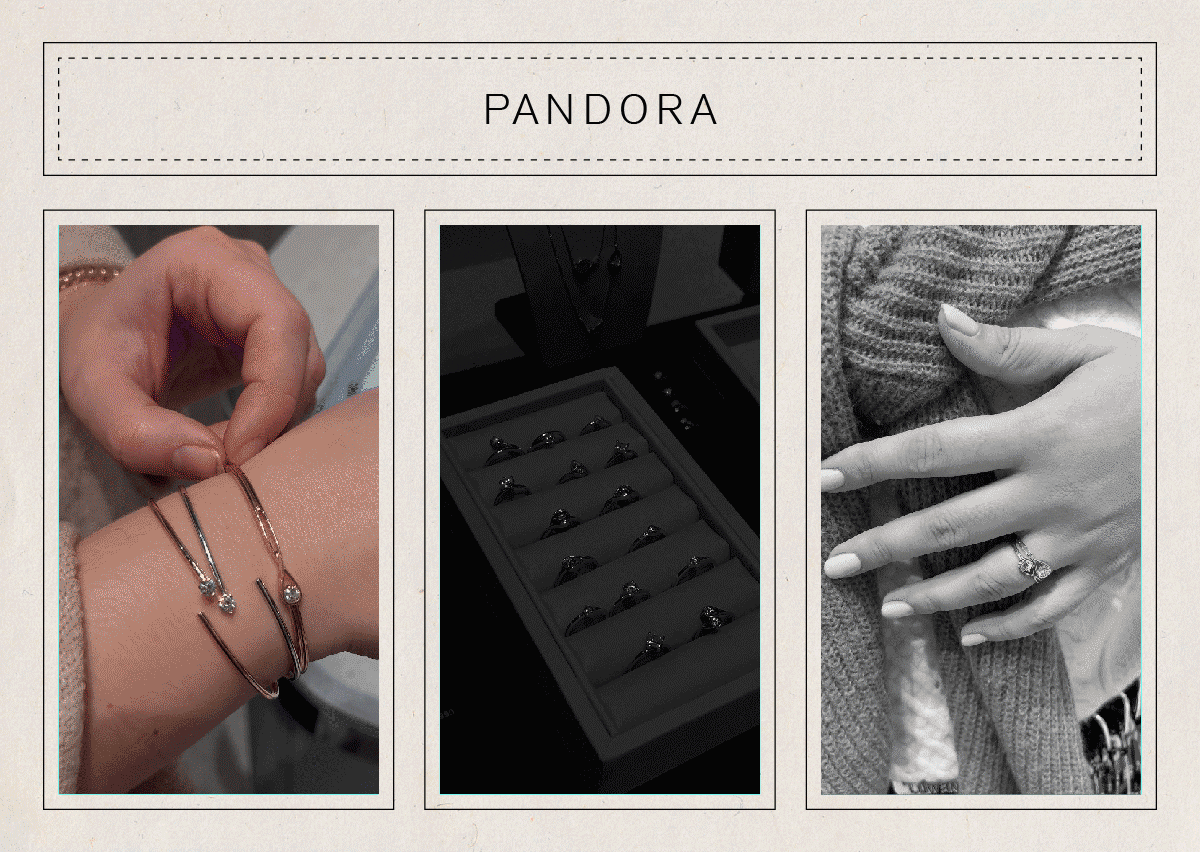
"Diamonds have such a long and storied history, and they are charged with so much wonderful emotion—joy, love, radiance. I could go on. But the category has had quite some high walls around it in terms of how they can be worn, and relatively few people have had access to them," Joshua Braman, Pandora's global senior vice president of diamonds, explained to Who What Wear. "We seek to change that."
Unlike traditional diamond pieces, the Pandora collection feels grounded in an everyday, livable aesthetic: a push the brand has been on for months. Not only can you (and your wallet!) feel good about the diamonds you're wearing thanks to Pandora's lower, lab-grown-centered pricing and sustainability efforts, but your pieces don't have to feel too fancy or like something you'd only wear on special occasions. Diamonds, frankly, are for everyone. "As a brand that gives a voice to people's loves as our core purpose, we design and craft jewelry that are vessels of meaning for our consumers. Lab-grown diamonds are a perfect complement to that strategy, as diamonds are so charged with meaning—love, strength, joy, light, radiance, etc.," Braman says.
There are other lab-grown stones that are gaining traction. I'm a newfound follower of Reddit's moissanite forum, and TikTokers are raving about yet another alternative stone, lab-grown white sapphire, thanks to buzzy jewelry brand Dorsey. In all honesty though, there's something special about a diamond—especially as a young, working woman of color. Whether it's naturally mined or lab-grown, it's something that represents some sort of success, especially as I enter my mid-20s, on the hunt for something that represents a milestone in my life. While the sheer number of hours I've spent hunting down a pair of diamond studs or a dainty tennis necklace could be embarrassing to anyone else, the fact remains: The best way to begin your fine-jewelry journey is to soak up as much information as you can. Gen Z is redefining the conversation on their own terms, looking for pre-investment buys that will let them get the look for less while, in turn, making smart choices on what they choose to spend their money on.
"I think with fine jewelry, there'll be a place for lab-grown diamonds," Wegman went on to explain. "There'll be brands that do plated demi-fine jewelry and lab-gowns, and it's a great low price point. Maybe it's perfect for Gen Z, who can't really get into the fine category quite yet in their career path."
What route you choose to go entirely depends on your lifestyle and budget, but either way, the diamond conversation is actively expanding to include diverse voices, affordable options, and female-founded companies that otherwise wouldn't have been given the platform. If all else fails, at least you'll have something shiny to get you through the days. As they say, diamonds are a girl's best friend.
Shop Ring Concierge:
Shop Pandora:
Shop more diamonds and diamond alternatives:
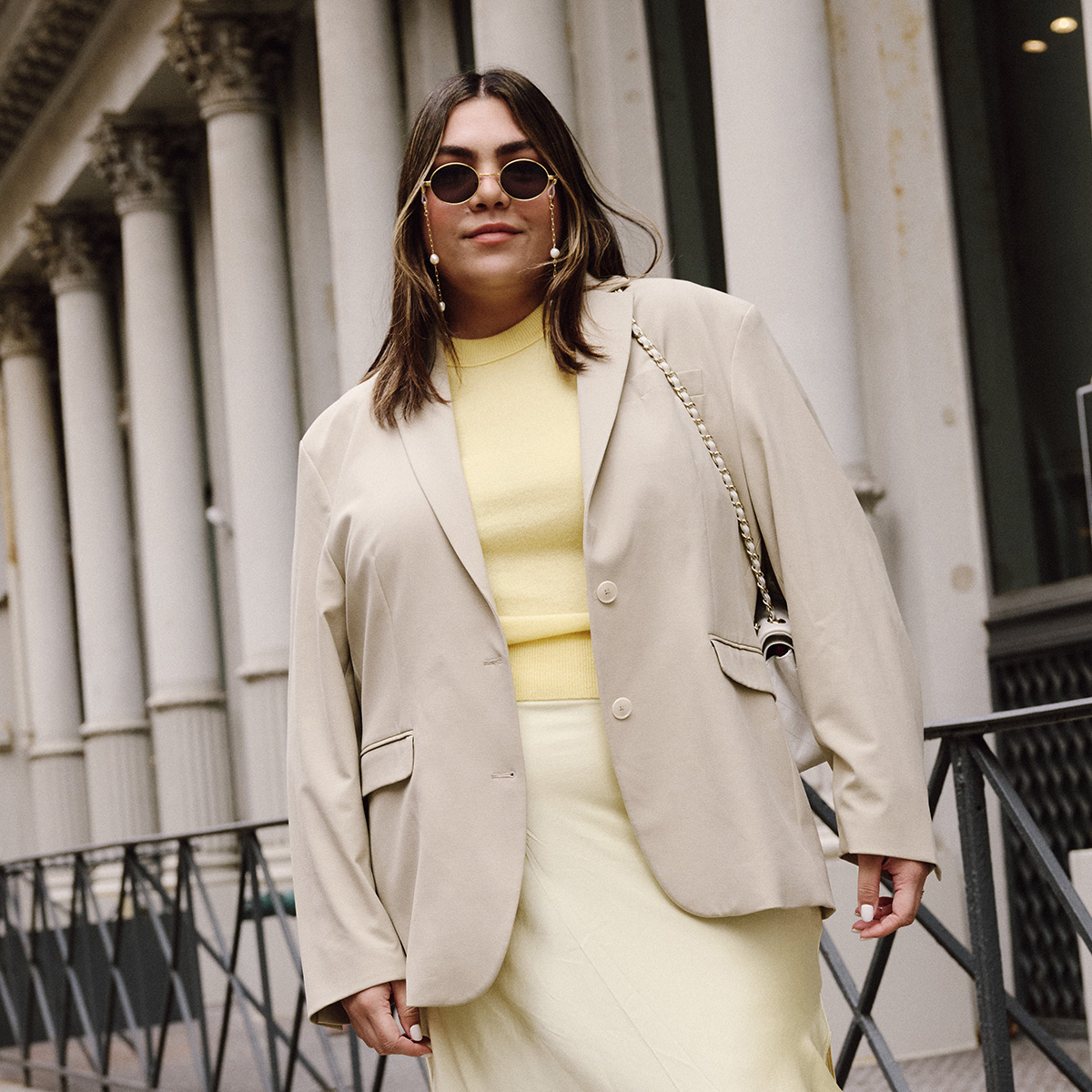
Ana Escalante is an award-winning journalist and Gen Z editor known for her sharp takes on fashion and culture. She’s covered everything from Copenhagen Fashion Week to Roe v. Wade protests as the Editorial Assistant at Glamour after earning her journalism degree at the University of Florida in 2021. At Who What Wear, Ana mixes wit with unapologetic commentary in long-form fashion and beauty content, creating pieces that resonate with a digital-first generation. If it’s smart, snarky, and unexpected, chances are her name’s on it.

